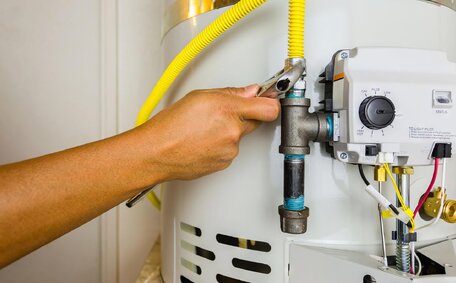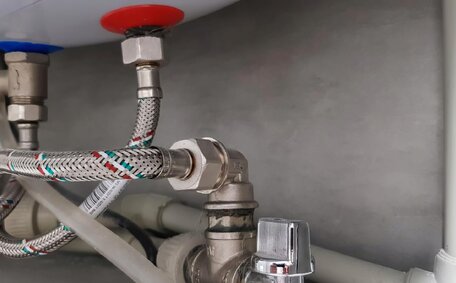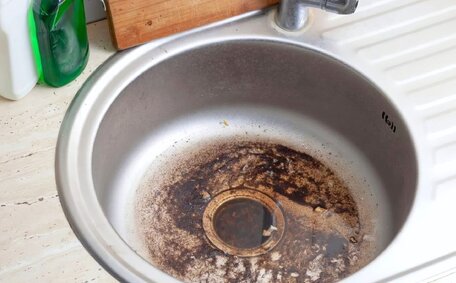Introduction to Pipe Relining Inspection
Pipe relining, a no-dig repair solution, utilises epoxy resin liners to mend damaged pipes, bypassing extensive excavation and high costs associated with pipe replacement. This approach, which involves inserting and curing an epoxy resin liner within old pipes, effectively forms a new durable lining, often lasting upwards of 50 years.
Regular inspections of relined pipes are essential to maintain their longevity and effectiveness, with an advisable frequency of every 2-5 years in areas prone to issues.
Pipe relining often emerges as a cost-effective alternative to traditional repairs, with a potential lifespan of over 50 years, even for previously damaged pipes. However, factors like ground movement and tree roots can still result in future failures.
We ensure the new lining’s structural integrity, proper curing, and full adhesion to provide safe and long-lasting pipe repairs. This proactive approach allows us to tackle potential issues before they worsen, assuring the efficacy of the pipe relining solution for your sewer drain.
If your property has relined pipes, remember to schedule periodic inspections with plumbing experts to maintain their condition. Preventative maintenance plays a critical role in maximising the lifespan of your investment in trenchless pipe repair.
Common Methods for Inspecting Pipe Relining
Several inspection methods are deployed to verify the quality and durability of relined pipes:
Visual Assessments
A CCTV drain camera allows for a visual interior inspection of the pipe, ensuring readiness for new pipe formation within the existing one during the relining process. The camera traverses the entire length of the relined old pipes ensuring there are no defects, leaks, curing lapses, or issues with liner adhesion.
Wall Thickness Evaluation
Unlike traditional pipe inspection methods, Our sophisticated cameras, often employed to repair drain issues, can measure the liner wall thickness at multiple points along the pipe. This rigorous verification step confirms that the minimum wall thickness standards for all types of pipe relining are met for structural integrity.
Pressure Testing
Pressure testing, essential in plumbing pipe relining, involves introducing pressurised air or water into the system after the lining material is inserted, to ensure there are no leaks. Pressure loss over time is monitored to check for leaks or weaknesses in the liner, which is a crucial step to think about pipe integrity post-relining.
Impact Testing
A cylindrical object is utilised in drain repair processes and pulled through the length of the relined pipe with its travel time measured. Variations may indicate dips, bulges or other defects requiring repair.
The expert team at Castle Hill Plumbing is well-versed with state-of-the-art technology to meticulously evaluate your home’s pipe infrastructure, specialising in Sydney pipe relining. Whether Cured-In-Place Pipe (CIPP), Pull-In-Place (PIP) or Brush Coating liners are used, follow-up inspections give peace of mind in the durability of pipe relining Sydney.
Visual Inspection
CCTV camera-driven visual inspection is crucial to assessing pipe relining benefits regarding quality and effectiveness. To ensure your peace of mind, our technicians meticulously feed a camera through the entire length of the relined pipe to check for proper alignment, defects, leaks, curing issues, essentially covering all you need know about the state of your pipe.
We examine the relining vs traditional pipe replacement outcomes, searching for a smooth, uniform interior pipe surface with no dips, bulges, cracks, holes or other defects. Proper curing of the epoxy resin liner, often achieved with UV light in advanced relining technology, is confirmed by verifying a hard, glossy surface with no soft spots. Any deviations from quality standards are noted for repair, thoroughly assessing the extent damage, and determining exactly what needs to be addressed.
Our advanced drain cameras deliver crisp, high-resolution images, accurately showcasing the interior condition post-relining. Areas of concern, which show what need to be assessed, can be reviewed multiple times from different angles. Photos and video clips are included in final inspection reports as necessary.
Our thorough visual inspection ensures your relined pipes meet stringent quality standards. Identifying minor issues early allows for prompt intervention, preventing them from becoming major problems later on.
CCTV Camera Inspection
CCTV camera inspection is crucial in the relining process for damaged pipes. Prior to installing a pipe lining, our plumbers employ CCTV cameras to visually assess the internal state of broken pipes, ensuring precise diagnosis and tailored solutions. This method helps identify breaches, obstructions, root intrusions, and other issues, serving as indicators for necessary repairs.
Once the new pipe lining is installed and we’ve meticulously cleaned up any debris, we carry out evaluations with CCTV cameras once more to ensure the integrity of the applied liner and that quality standards are met. We verify proper adhesion to the existing walls of the plumbing pipes, a key element in confirming the pipe relining seals as anticipated.
Thorough pipe inspection, which does employ state-of-the-art equipment, before and after relining utilises high-resolution CCTV drain cameras that are capable of navigating pipes up to 300mm in diameter. The camera is attached to a pole or wheeled transporter and carefully fed through the pipe’s full length while transmitting images to an above-ground monitor.
CCTV footage enables us to immediately identify post-lining issues, including inadequate resin curing, cracks, and leaks, which are critical for prompt advancements in pipe repair technology. We can then take immediate corrective action to fix problem before signing off on the relining job.
Areas of Emphasis During Inspections
When inspecting relined pipes, our technicians pay particular attention to high risk areas that are prone to defects or failures over time:
- Sewer pipe junctions - Where pipes join together, proper fusion of the liner is checked.
- Bends - The liner must maintain integrity around turns without sagging or bulging.
- Service connections - These entry and exit points in the pipe system are closely inspected to ensure they are securely sealed against ingress.
- Changes in diameter - Adhesion of the liner where pipes transition from one size to another is visually confirmed.
- Problematic sections - Previously identified issues like cracks or obstuctions are re-evaluated after relining.
Any minor problems can be addressed promptly to prevent bigger issues arising down the track.
Ensuring Proper Installation
Our technicians assess critical criteria during new pipe liner inspections to ensure proper installation and long-term functionality:
- Uniformity - The liner should maintain a smooth, even surface without any thin spots, bulges, or defects.
- Adhesion - Complete adhesion to the interior pipe walls is verified, with no gaps or air pockets.
- Structural integrity - The liner must withstand operating pressure and loading without leakage or compromise.
- Water tightness - Pressure testing confirms the absence of any weep holes or pinhole leaks in the liner.
At Castle Hill Plumbing, For all drain pipe projects, we exclusively utilise high-quality, eco-friendly epoxy resin liners. The liner’s compatibility with local soil conditions, alongside our rigorous inspections, bolsters our confidence in its 50+ year lifespan, which highlights our exceptional work.
Checking for Defects or Damage
Once a pipe lining has cured, your plumber will inspect the cured pipe again ensure there are no defects, damage or installation issues. We meticulously inspect the entire length of the relined pipe, focusing on critical areas such as bends and junctions, essential in post-relining service assessments.
Potential defects we look for include cracks, holes, bulges, leaks, blockages, poor adhesion, and insufficient curing or hardening of the liner. Should any defects or damage surface, we adeptly assess the situation to determine how repairs can done, be it spot repair, section re-lining, or full liner replacement if significantly compromised.
It’s vital that relined pipes are free of defects that could jeopardise structural integrity and watertightness, underscoring the importance of regular assessments. Acknowledging the precision of our inspections, we stand behind and recommend them for a comprehensive analysis, offering long-term warranties against defects and failures.
Signs of an Effective Pipe Lining
There are several key signs that indicate a pipe lining has been properly installed and will provide long-lasting results:
- Smooth interior surface - The epoxy liner should have a uniform, smooth surface throughout the pipe with no cracks, holes or protrusions.
- No leaks or seepage - Pressure testing post-lining ensures water-tight integrity with no pinhole leaks or seepage through the pipe walls.
- Hardened resin - A properly cured liner will have a hard, glossy surface that maintains integrity over time.
- Good adhesion - The liner fully bonds to the interior pipe walls with no gaps or air bubbles behind it.
- Structurally sound - The epoxy resin can withstand standard pipe pressure loads without bulging, sagging or deforming.
- Standard wall thickness - Measurements confirm the liner meets minimum wall thickness standards for longevity.
- Intact connections - Service connections and pipe junctions maintain watertight seals preventing ingress or leakage.
If our post-lining CCTV camera inspection identifies any defects or quality issues, we immediately rectify them. This ensures your relined pipes will provide 50+ years of trouble-free performance.
Smooth Interior Surface
A key indicator of effective pipe relining is achieving a smooth, uniform interior pipe surface. The epoxy resin liner, once cured in place, should form a consistent layer free of pits, bumps, cracks or irregularities that could impact flow.
Although relining can slightly reduce the pipe’s inner diameter, the resulting smooth surface typically improves the flow rate, outweighing any potential loss in pipe capacity. The smooth finish created by pipe relining reduces friction, facilitating the efficient movement of hot water and steam. So while the cross sectional area is marginally smaller, efficiency is often increased after relining.
Our post-lining CCTV camera inspections ensure that the relining meets the necessary surface finish standards. A smooth, glossy liner surface ensures that wastewater, rainwater, and greywater flow freely, while secure bonding guarantees the relining’s structural stability for over 50 years.
No Visible Cracks or Holes
The absence of any visible cracks, holes or defects in the pipe lining post-installation is a crucial sign of quality workmanship. Even tiny holes or cracks can cause water ingress and even collapse if left unaddressed.
Our very professional CCTV camera inspections, a crucial part of drain cleaning and maintenance, carefully examine the entire length of relined pipes to ensure there are no cracks, gaps or compromises anywhere in the epoxy liner. We also check pipe connections and joints for proper seals with no visible defects, providing a permanent solution to previous issues.
Tiny cracks or weak spots not evident immediately after lining can require more time to develop, over months or years after relining, due to factors like ground shifts and temperature changes. That’s why follow-up inspections every few years would highly recommended in problem areas prone to pipe damage and tree root intrusion.
At Castle Hill Plumbing, we take pride in the fact that our team did great job with drain relining, backing it with long-term warranties against any defects and failures.
Properly Sealed Connections
Properly sealed connections are essential for the effectiveness of drain pipe relining, contributing to customer satisfaction. Areas where service lines, joints or lateral pipes meet the main line are the most common sources of leaks if not properly sealed.
Our technicians pay special attention to connections with existing pipe structures during post-lining inspections. The liner must be properly fused and watertight where pipes join together or tap into the main line. Minor leaks, if left unaddressed, could allow soil and water ingress, potentially causing significant damage to the piping system.
We thoroughly check seals at service entrances, joints, junctions and transitions using CCTV cameras. Air pressure testing also helps detect leakage sites not visible to the camera. Any deficient connections are promptly re-lined and sealed to meet stringent quality standards.
Securing properly sealed connections during pipe relining projects guarantees a robust, enduring pipe structure post-inspection. Give Castle Hill Plumbing a call to evaluate your pipes and discuss long-term trenchless repair options.
Conclusion
Regular inspections are crucial to verify the liner’s proper curing, which ensures the long-term effectiveness of the repair. At Castle Hill Plumbing, we utilise CCTV cameras and pressure testing to thoroughly evaluate pipes after relining.
Our visual assessments, pivotal to our pipe relining services, commence when evidence of concerns prompts an investigation into defects, leaks, proper curing, and liner adhesion. Wall thickness and impact testing confirms structural integrity standards are met.
We pay special attention to critical areas like bends, joints and connections, which are crucial points to consider when thinking about pipe relining during inspections. Any issues identified can be promptly addressed before escalating. Follow-up inspections every 2-5 years provides peace of mind that quality relining work will last 50+ years.
For assistance with blocked drains or inquiries on trenchless pipe relining services in Castle Hill, contact Castle Hill Plumbing at 1300 349 338 or email [email protected]. Our licensed and insured technicians are adept at managing all aspects of your plumbing system, from unblocking drains to sewer line issues, stormwater management, and hot water systems.






